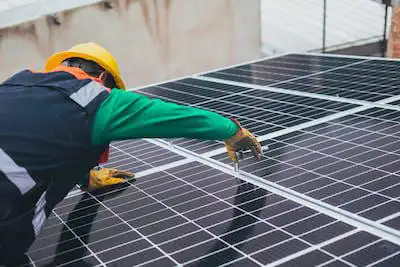The answer lies in the two distinct paths offered by solar installations: grid-tied and off-grid. Each path navigates the relationship between your solar-powered home and the broader electricity grid differently, shaping your dependence on traditional energy sources.
Grid-Tied: Sharing the Sun's Bounty
Imagine your solar panels as miniature power plants, generating electricity when bathed in sunlight. In a grid-tied system, these mini-plants are seamlessly integrated with the broader electrical network. As your panels churn out sunshine-fueled watts, they offset your energy consumption from the grid, potentially reducing your utility bills significantly.
Think of it as a delicate dance:
Sunny Days: When your panels generate enough to power your home's needs, the excess electricity seamlessly flows back into the grid. This is often compensated for through net metering, where your utility company credits you for the surplus, potentially offsetting future energy bill charges.
Cloudy Days: When sunlight dwindles, or your energy demands surge, your home switches seamlessly to drawing power from the grid. This ensures you never face a blackout unless the entire grid itself experiences an outage.
Night Time: As darkness drapes the land, your panels take a rest, and your home draws entirely from the grid, unless you have invested in a battery backup system.
Off-Grid: Independence or Isolation?
For those seeking complete separation from the grid, off-grid solar systems offer a path to energy autonomy. In this scenario, your solar panels become your sole source of power, meticulously managed by batteries that store excess electricity for times when the sun dips below the horizon.
But freedom comes with its own set of challenges:
Dimensioning the System: Sizing your solar panels and battery bank accurately is crucial. Miscalculations can leave you in darkness or laden with excess, unusable energy.
Financial Considerations: Off-grid systems often require a larger upfront investment than grid-tied systems, as batteries and additional equipment add to the cost.
Weather Dependence: Your energy security becomes hostage to the whims of the weather. Cloudy days or extended periods of low sunlight can drain your batteries, leaving you reliant on alternative sources, like generators.
The Golden Balance: Hybrid Systems
For some, the ideal solution lies in a hybrid approach. Combining the best of both worlds, hybrid systems harness solar power with the stability of the grid and the security of battery backup.
Sun as the Primary Source: Solar panels remain the first line of defense, offsetting grid consumption and potentially enabling net metering.
Batteries for Backup: When sunshine wanes, batteries bridge the gap, ensuring uninterrupted power flow.
Grid as a Safety Net: During periods of extended low solar generation, the grid seamlessly fills the void, guaranteeing your home stays lit.
Beyond the Binary: Considering Your Needs
Choosing the right path depends on your unique circumstances and aspirations.
Grid-tie may be perfect: If cost efficiency and minimal disruption are your priorities, and you're comfortable relying on the grid, a grid-tied system with net metering offers significant savings.
Off-grid beckons: If energy independence and resilience to outages are paramount, and you're willing to invest in a robust system and manage its intricacies, an off-grid setup might be your answer.
Hybrid offers a bridge: For those seeking a balance between autonomy and convenience, a hybrid system provides a safety net against unpredictable weather while maximizing solar power utilization.
Remember, your chosen path is not set in stone. You can gradually evolve your system over time, adding batteries or transitioning from grid-tied to off-grid as your needs and resources change.
The sun's bounty is available to all. Embracing solar power, whether through grid-tied, off-grid, or hybrid systems, is a step towards a cleaner, more sustainable future. So, ask yourself: how will you harness the sun's power to illuminate your path?
This exploration of the relationship between solar roofs and the grid is just the beginning. Let's continue the conversation, delve deeper into specific system nuances, and discover how, together, we can turn sunlight into a brighter future for all.

